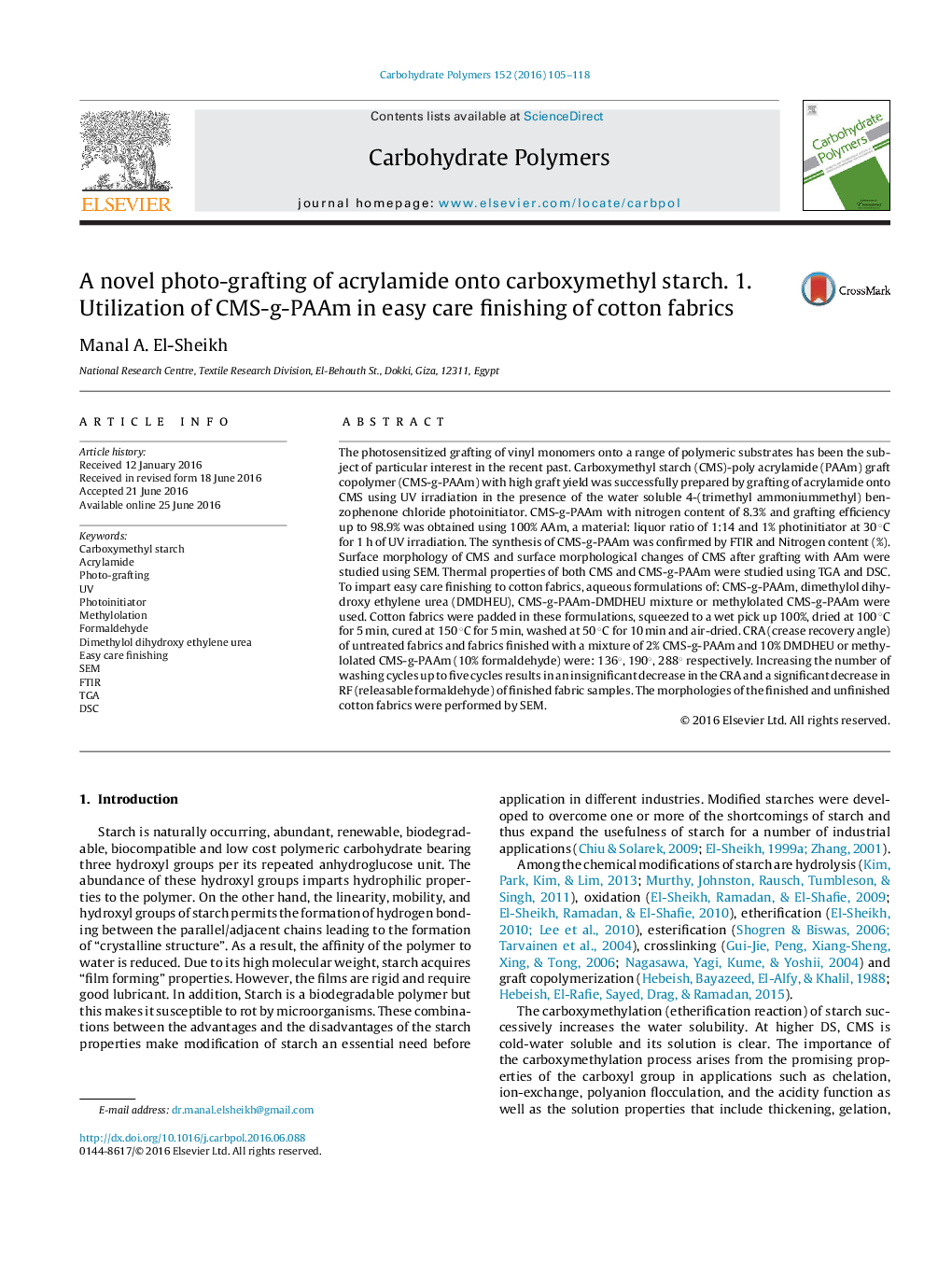| Article ID | Journal | Published Year | Pages | File Type |
|---|---|---|---|---|
| 1373626 | Carbohydrate Polymers | 2016 | 14 Pages |
•UV irradiation/4-(trimethyl ammoniummethyl) benzophenone chloride photoinitiator as a novel photografting system.•Synthesis of carboxymethyl starch −g- polyacrylamide with grafting yield up to 98.9%.•Utilization of the methylolated product of carboxymethyl starch −g- polyacrylamide in easy care finishing of cotton fabrics.•Significant increase in CRA after finishing of cotton fabrics with methylolated product.•Insignificant decrease of the CRA and significant decrease in RF of finished fabric after five washing cycles.
The photosensitized grafting of vinyl monomers onto a range of polymeric substrates has been the subject of particular interest in the recent past. Carboxymethyl starch (CMS)-poly acrylamide (PAAm) graft copolymer (CMS-g-PAAm) with high graft yield was successfully prepared by grafting of acrylamide onto CMS using UV irradiation in the presence of the water soluble 4-(trimethyl ammoniummethyl) benzophenone chloride photoinitiator. CMS-g-PAAm with nitrogen content of 8.3% and grafting efficiency up to 98.9% was obtained using 100% AAm, a material: liquor ratio of 1:14 and 1% photinitiator at 30 °C for 1 h of UV irradiation. The synthesis of CMS-g-PAAm was confirmed by FTIR and Nitrogen content (%). Surface morphology of CMS and surface morphological changes of CMS after grafting with AAm were studied using SEM. Thermal properties of both CMS and CMS-g-PAAm were studied using TGA and DSC. To impart easy care finishing to cotton fabrics, aqueous formulations of: CMS-g-PAAm, dimethylol dihydroxy ethylene urea (DMDHEU), CMS-g-PAAm-DMDHEU mixture or methylolated CMS-g-PAAm were used. Cotton fabrics were padded in these formulations, squeezed to a wet pick up 100%, dried at 100 °C for 5 min, cured at 150 °C for 5 min, washed at 50 °C for 10 min and air-dried. CRA (crease recovery angle) of untreated fabrics and fabrics finished with a mixture of 2% CMS-g-PAAm and 10% DMDHEU or methylolated CMS-g-PAAm (10% formaldehyde) were: 136°, 190°, 288° respectively. Increasing the number of washing cycles up to five cycles results in an insignificant decrease in the CRA and a significant decrease in RF (releasable formaldehyde) of finished fabric samples. The morphologies of the finished and unfinished cotton fabrics were performed by SEM.
